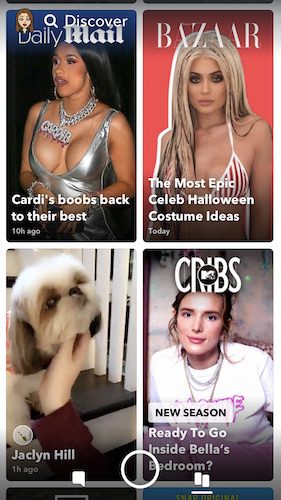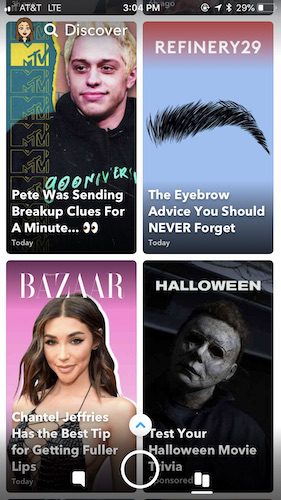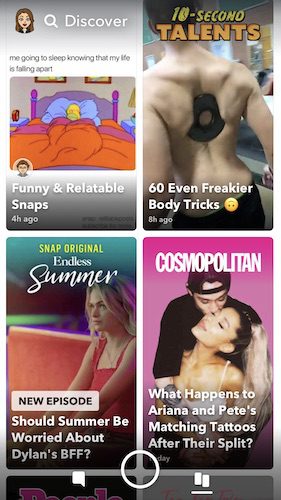
When it was first introduced, Snapchat’s Discover platform changed online video forever.
The 10-second, vertical clips and attached links set an industry-wide precedent for the online media world, and publishers have been scrambling to embrace the service ever since, in an effort to reach the app’s relatively young audience.
The immediate results inspired a lot of excitement. The platform managed to make viewers feel more closely connected to their favorite celebrities, influencers and media companies, and challenged these content creators to tell stories in entirely new ways.
Unfortunately, we just can’t have nice things. Today–almost four years after Discover’s launch–publishers on the platform are reverting to old and tired tactics to keep young people interested.
Each day it seems as if the Discover page is looking more and more like a teen magazine, retrofitted for the internet.
It’s not to say that teen magazines are inherently bad (or that I didn’t have piles and piles of them in my room for years), but the innovative, dynamic platform has recently become the newest conduit for some of the worst aspects of the magazine industry, including relentless celebrity gossip, body shaming and stereotyping.
On any particular day, the Discover page is riddled with sketchy paparazzi photos coupled with speculative headlines, unhealthy fitness and beauty “hacks,” and unfair criticisms of women celebrities and their bodies.
These tired themes, mixed with the increasingly unavoidable clickbait headlines, “gross” videos and stale memes that run rampant on the app have made Discover nearly unwatchable.
These are just a few of the stories that appeared on my feed in the last two days:
Some of the similarities between Discover and teen magazines are no accident. After all, several of the platform’s biggest publishers are–first and foremost–magazine companies. Cosmopolitan, Marie Claire and Seventeen, to name a few, have all fully embraced the 10-second vertical video format.
A blog post published along with the now-infamous Snapchat update of 2017–which separated friends’ Stories from publisher content and sparked a cataclysmic user exodus from the app–offers more details about how the Discover page is organized and suggests that an algorithm may be to blame.
“Over time, Discover will become uniquely personalized for you,” the post reads. “While the Stories on Discover are personalized algorithmically, our curators review and approve everything that gets promoted on the page. We believe that this balance of human review and machine personalization provides the best content experience on mobile.”
In other words, everyone’s Discover page should look slightly different. However, because all Discover Stories appear on a single page with infinite scrolling, everyone has access to the same content.
Along with the problematic stories published by media companies and individual content creators, several of the new original video series featured on Discover rely on age-old stereotypes and unrealistic tropes about teenagers and young people in general.
For example, the Snapchat-original reality series “Endless Summer” focuses on 19-year-old YouTube-famous beauty guru Summer Mckeen and her new life in Laguna Beach, California. Rather than focusing on Mckeen’s business success or the challenges of living on one’s own as a young adult, the show is seemingly only concerned with McKeen’s potentially unfaithful boyfriend, catty friends, and the never-ending pursuit of more and more followers.
All this to say, Discover offers a truly fresh approach to online video, and an opportunity to reach young audiences at scale. However, if media companies and content creators aren’t able to innovate their storytelling along with the platform, they will never be able to tap its full potential.



